"Besides salary, I have at least five sources of income."
Written by: Ignas
Translated by: Luffy, Foresight News
I never thought of becoming a KOL. The term "KOL" sounds a bit tacky.
People generally have negative emotions towards internet celebrities and the entire internet celebrity economy. I understand the reasons behind it. The crypto world is full of scammers who sell and promote to their fans, ultimately causing harm to them.
But not all KOLs are scammers. Money is not my motivation for posting on Twitter. I initially posted because I was bored during the bear market in 2022.
Now, I'm bored again, so I asked on Twitter what I should write next. The most popular idea was to share insights on becoming a KOL, how to expand the audience, and reveal some secrets of crypto KOLs and marketing. Since I already have 100,000 followers on Twitter, I think this is a good opportunity to share some different content.
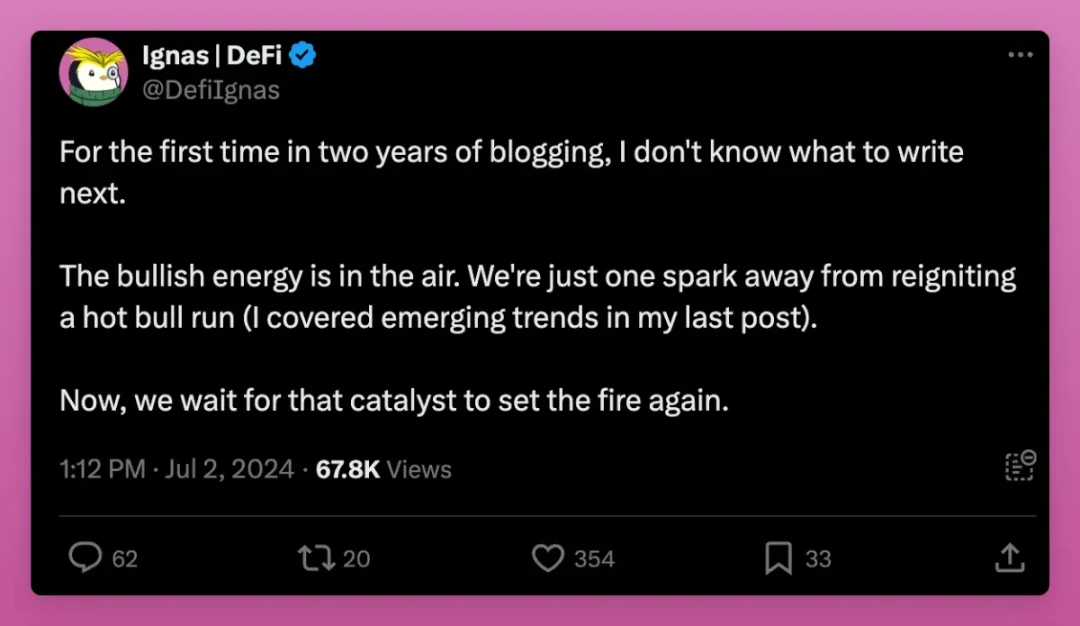
In this article, I will briefly share my story, provide advice on expanding the audience, and discuss popular business models (including pricing).

First, do you want to be a KOL?
At the end of 2021, when the market crashed, I was working at a Korean CEX. Suddenly, the cryptocurrency market became unusually quiet.
For a few months, I went to the office just to browse Twitter, nothing interesting was happening. To make matters worse, my boss was promoting the CEX, so there was no real work to do in the office.
This was my second bear market experience, so I knew a new bull market was on the horizon.
The bull market of 2020-2021 started with DeFi, but few people understood how it worked. Most people traded on CEX and didn't know how to use MetaMask. When the DeFi summer came, those who understood the basics of DeFi made substantial profits. I also started farming YFI on Curve early on, with annual interest rates reaching a terrifying 10,000%. What a wonderful time…
My plan was to continue researching to find the next opportunity as soon as possible.
I initially wrote on Twitter to record personal notes to prove that I truly understood the topic. That's why my Twitter handle is "DeFi Research."
Tip: If you think you truly understand a concept, try writing it down. You'll find that explaining your ideas clearly on paper is much more difficult than imagining them in your mind.
But I still felt bored. So, I wrote a large research piece on the roadmaps of 25 DeFi protocols to find their common trends. It took me a week to write this separate piece.
I was worried it might fail. After investing so much time in an article, you really hope it will succeed.
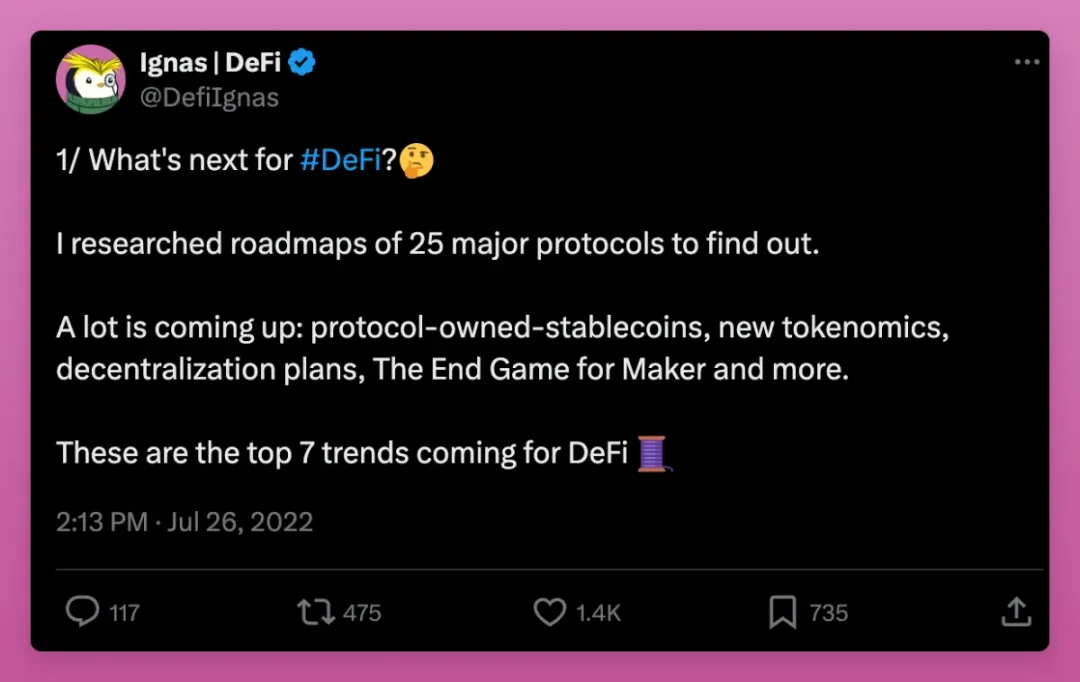
I was lucky; the article quickly went viral. DeFi Edge, Miles Deutscher, DeFi Dad… many DeFi big shots engaged with it, and it's still one of my top 5 most liked posts to this day (with 244k views).
At that time, I only had 300 followers. But afterward, my followers rapidly increased for several days. With that post, my followers grew to about 3,000, a tenfold increase!
Tip: Content quality is crucial on Twitter. While popular posts may be accidental, sustained follower growth requires insightful and unique content, which takes time and effort. Some posts may fail, but successful ones will attract high-quality followers.
I continued to learn and share content about token economics, stablecoins, and SBT on a weekly basis, and quickly grew to 10,000 followers.
Tip: Persistence is key. Once you gain momentum, you need to keep working hard. Otherwise, the Twitter algorithm will "forget" you, and your posts won't appear in others' feeds.
The first milestone was achieved; the first 10,000 followers are the hardest. After that, you can cover broader topics. Next, I will provide more advice on expanding the audience.
Why you should write on Twitter (even if you don't want to be a KOL)
Two other reasons that prompted me to start writing on Twitter were: my girlfriend and Naval Ravikant. Naval completely changed my perception of "success." In his famous post "How to Get Rich (without getting lucky)," he shared his own success experiences.

The post is great, but the book is more detailed. You can read his book here.
Interestingly, as an experiment, I wrote a viral post about how I got rich through cryptocurrency, which gained me thousands of followers.
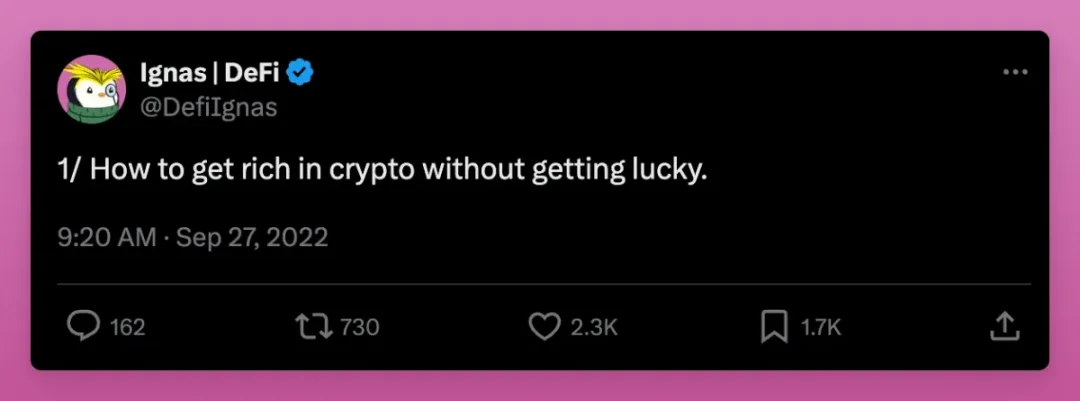
In short, Naval teaches people to pursue wealth rather than becoming rich. By arming yourself with specialized knowledge and leveraging it through the internet, you can get rich, greatly expanding the space for career development.
This specific knowledge is very concrete and creative, and can be obtained through curiosity and passion. You can create software and media that work for you while you sleep through coding and media applications.
But the unexpected delight for me was in the following part:
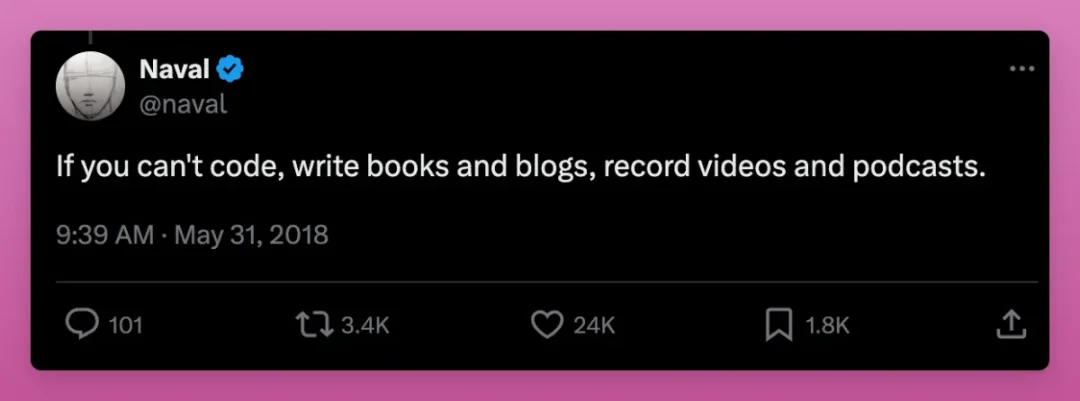
"If you can't code, then write books and blogs, record videos and podcasts." This will eventually allow you to leverage "specific knowledge, with leverage, and you will get what you deserve."
In the attention economy era, having an audience is an advantage.
Our attention is limited, while information is unlimited. With so much information vying for your attention, your attention becomes more valuable and harder to attract.
For crypto projects, whether they can attract your attention may mean the success or failure of the protocol, with technical features taking a back seat.
If it's not an attention game, then what is it? Valuation is largely driven by attention, and 99% of cryptocurrencies are still speculative.
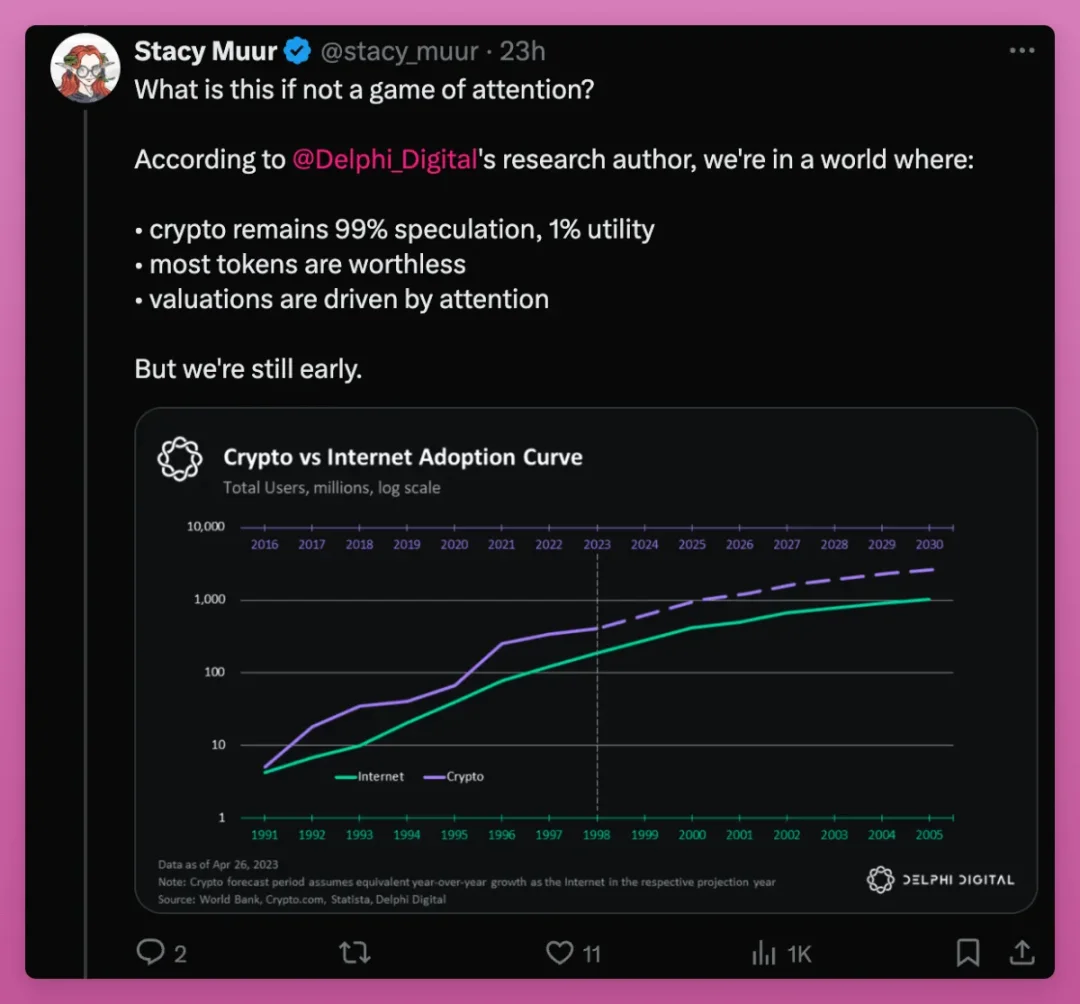
Stacy interprets Delphi Digital's report, and attention is everything.
That's why I support Polkadot's use of internet celebrity marketing strategy. I believe this is the most effective way to spread information to native Web3 users. The problem with Polkadot is its poor execution.
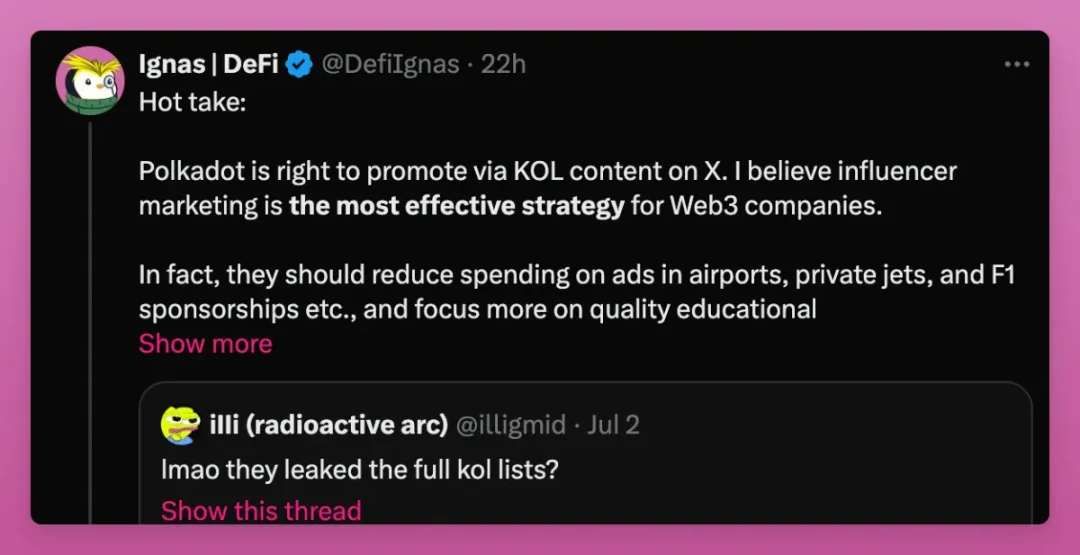
As cryptocurrencies are largely driven by narratives and emotions, crypto companies hope to collaborate with influential people.
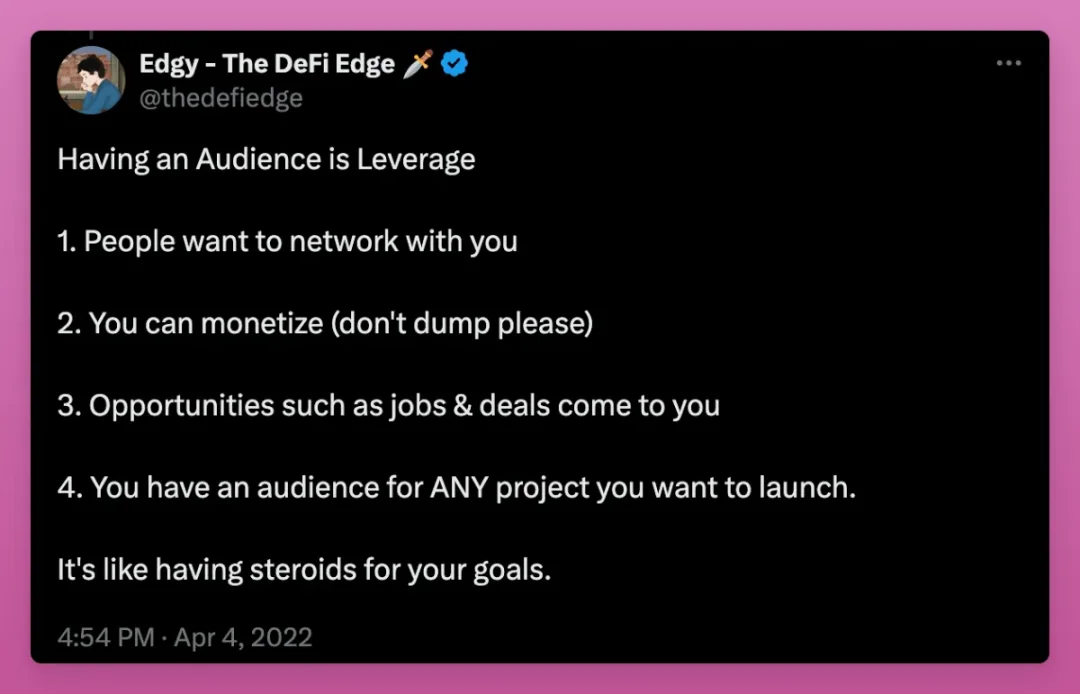
As Edgy said, this leverage makes it easier for individuals to find work and trade, reducing reliance on a single source of income.
In short, Naval's book explained everything to me:
- I was bored but curious about cryptocurrency, so I started researching, which helped me build specific knowledge.
- Since I can't code, I chose writing to increase my audience and gain influence.
- As the audience expanded, I gained multiple sources of income.
- For me, cryptocurrency is like a game. (When I was in my teens, I played "Lineage 2". Leveling up in the game is similar to gaining followers on Twitter. Money in cryptocurrency is like Adena in the game, becoming a KOL is like becoming a hero in "Lineage", expanding your influence.)
Tip: What are you truly curious about? In the long run, you need to maintain motivation through curiosity.
Business Models
Before I share tips on gaining followers, I want to first share an important reason for becoming a KOL: making money.
This is the biggest challenge for many KOLs, as monetization is harder than attracting viewers and fans.
A few months after starting to write, I quit my 9-to-5 job. It was the best I've ever felt.
I went to a café, opened a Notion table, and listed all the popular models KOLs use to make money. My first idea was to find investment opportunities for venture capital firms while understanding excellent protocols in the crypto space. Long story short, I eventually had a blog, endorsements, an Instadapp ambassador position, and launched my KOL marketing agency, Pink Brains.
Besides salary, I have at least five sources of income (including airdrops).
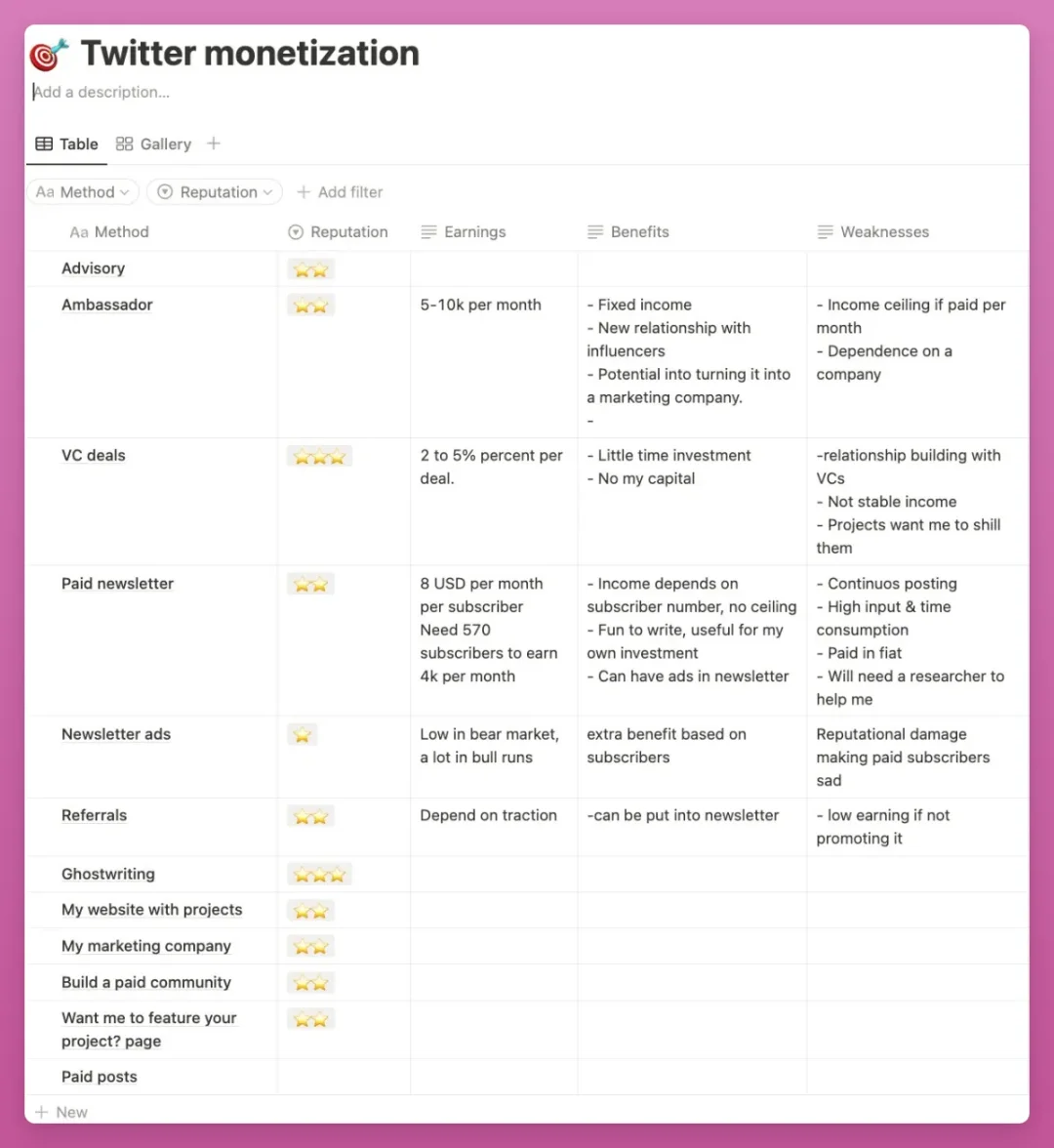
Note: I created this Notion table myself and haven't touched it in a year. So, it's not complete and has many typos.
Therefore, here are the most popular business models for crypto KOLs:
Paid Posts: Seems simple but can damage your reputation.
- A bad collaboration with a suspicious crypto project can ruin your reputation, so make sure the project is reliable. Accounts with fewer than 10,000 followers rarely attract mainstream projects, while accounts with many followers may be overwhelmed, leading to extensive research projects.
- Compensation varies based on private negotiations, KOL reputation and influence, and KOL understanding of other fee rates. For KOLs with fewer than 20,000 followers, the starting price for a post is usually around $500, but for KOLs with tens of thousands of followers, the starting price for a post may reach $3,000-5,000. Reputation risks for mainstream projects are lower, so the payment is usually lower.
- Compensation also changes as the market shifts from bullish to bearish or from bearish to bullish.
Blog Sponsorship:
- Dedicated sections in blog posts. Prices range from hundreds to thousands of dollars, depending on the number of subscribers. The sponsorship price for a 150-word sponsored content in a blog post is expected to be over $1,000.
- Featured blog posts: A well-known KOL I know charges $15,000 for a dedicated blog post, usually much lower for a regular blog post.
- Paid subscriptions: Not popular as it limits KOL's growth, and you can earn more from the above two methods. For example, I earn a pre-tax income of $13,000 annually from paid subscriptions.
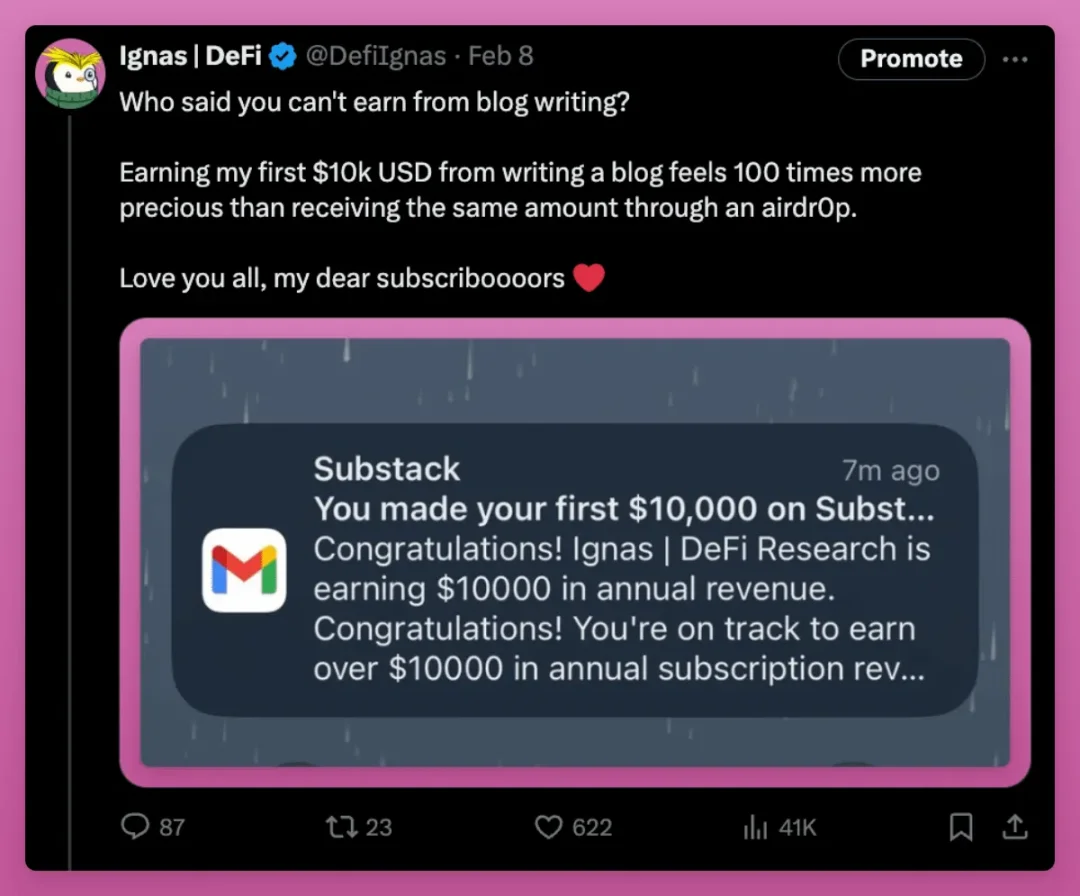
KOL Private Investments:
- Private investments are becoming increasingly popular among KOLs. Projects also like this model because KOLs voluntarily participate in project development without being paid for commissioned work.
- The investment amount for each KOL is usually between $1,000 and $20,000.
- Terms such as lock-up period and valuation are better than most venture capital firms.
- You are required to post information about the project, usually a few tweets per month.
- High potential for returns. Previously, it was considered almost risk-free due to short lock-up times and low valuations. The situation is somewhat different now, as low circulation and high FDV tokens are constantly being sold off.
Advisor/Ambassador Positions:
- Both have minimum posting requirements per month and are long-term. Compensation is usually in the form of project tokens, while one-time paid posts on Twitter use stablecoins. Compensation varies, but usually ranges from $5,000-10,000 per month, or even $15,000.
Referrals:
- I like referral models that bring special benefits to the referrer. Airdrops are suitable. Another common one is where CEX uses a portion of the fee obtained from new users to reward the referrer. This income is unstable.
Token Airdrops to Fans:
- Purchase tokens and then recommend them to your fans. This is very common, even among the "most respected" KOLs on Twitter.
KOLs have more monetization methods, such as becoming a representative of a DAO, and the upper limit of your monetization ability depends on your creativity.
Finding a profitable model takes time. It took me over 9 months and having over 40,000 followers on Twitter to find my first blog sponsor. I decided not to do paid posts (only did one for Pancakeswap V3) and instead started a KOL agency.
In fact, I earned more money from posting paid posts than from our KOL agency, with less work. But I'm more interested in growing Pink Brains than making money.
Expanding Your Audience
This topic could be a separate blog post, and you can find many related posts on Twitter, such as this post by Edgy. For simplicity, I will share my personal advice:
- Start with a focused area and gradually expand your influence.
- Start by focusing on a popular area or even just one protocol, then become an authority in that area. Write guides, share updates, connect with the core community, and share your insights.
- Make sure you're truly passionate about it, not just feeling like you're working for it.
- As you grow personally, expand your coverage: a popular protocol → similar protocols → DeFi → cryptocurrency → others
- Find what you're good at:
- You might be good at on-chain transactions, creating memes, or finding airdrops. It's best to combine multiple skills to make yourself irreplaceable.
- For example, CC2 Ventures shares airdrop guides and personally farms these airdrops.
- Provide value first, then seek monetization.
- First, you need to provide something valuable to your audience without expecting anything in return. Write guides, share insights, and connect with like-minded people.
- Profit takes time. Starting to profit from paid posts too early may hinder your long-term development.
- For example, ELI5 of TLDR grew to 13,000 followers by commenting on popular posts.

Avoid using hashtags and use token symbols instead. Using too many hashtags can make your posts look like spam.
Choose a striking profile picture and use it consistently. NFT avatars (such as Pudgy Penguins) can attract community members and increase your number of followers, but NFTs are expensive.
Try new content: yesterday's success may be tomorrow's failure. As crypto trends evolve, stay ahead by constantly reshaping yourself.
- I've seen many influential people lose their influence because they failed to reshape themselves.
- Uniqueness stands out. Draw inspiration from your favorite writers, but don't plagiarize their content.
- Mix lightweight content posts (like this one) with topics and long posts. Lightweight content can get views, while long posts can attract followers.
Tag a few experts in the field at the end of your post. But please don't repeatedly tag the same person, as it can be annoying.
Avoid posting meaningless junk. Insightful junk posts are a high-level art form that requires wisdom and expertise.
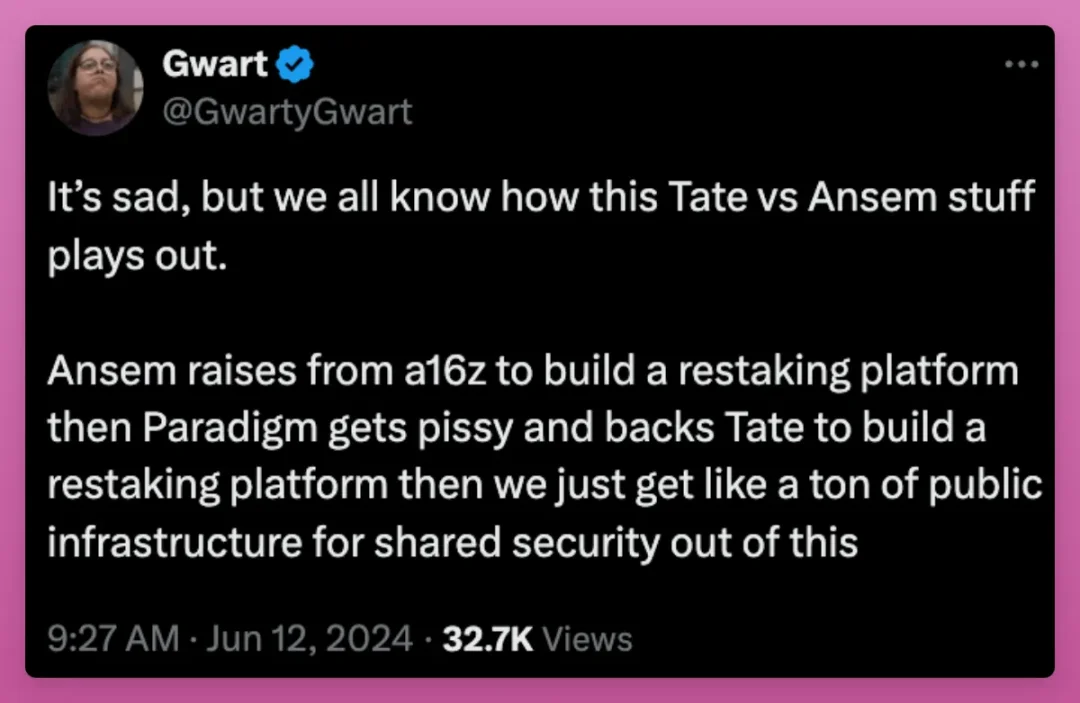
- Use tools like Typefully to help you write posts: fix grammar, use AI for brainstorming, and track data.
- Review the analytics to understand which type of content resonates most with your audience, then adjust your strategy.
Respond to post comments, engage in discussions, and express gratitude to your fans. Community building is a two-way street.
Try other platforms: you can start building your audience on Farcaster, Debank, or Lens where there is less competition. Once you have a stable fan base, bring them to Twitter.
Don't look for easy shortcuts, there are none.
- Avoid Twitter activities like liking, retweeting, and commenting. These can distort your engagement metrics. After the activity ends, the algorithm will show future posts to the same users seeking rewards. If they no longer engage, your influence will diminish. Prioritize small, focused communities.
- Focus on quality, not just for attention. Forget vanity metrics, attract "valuable fans" with top-notch content.
Ultimately, it depends on whether you have unique insights, know how to write, and keep working hard. It took me two years to gain 100,000 followers.
Unfortunately, building a fan base is now more difficult than ever. There are few newcomers in Crypto Twitter, so the audience for posting and reading articles is the same.
The "Recommended" feature on Twitter reduces the need to directly follow accounts.
I recommend following Alex to understand the changes in the Twitter algorithm and how to adapt to expand your audience.
How to Promote Yourself on Twitter
An unexpected side effect of becoming a KOL is an increase in sales ability. This is not just because the audience has expanded.
I receive dozens of direct messages every day, but can only reply to a few. Unfortunately, I can't reply to every message as it's very time-consuming, and most messages are meaningless.
Most KOLs do the same. The primary reason for not replying is lack of mutual following: if I'm not following anyone who follows you, you will be passed over.
That's why, even if you're not a KOL but a developer, researcher, company employee, business developer, etc., if you intend to contact people on Twitter, you should also gain followers.
I receive a lot of sales messages every day, teaching me how to sell. Here are some tips:
- Keep it concise, long messages will be skipped.
- Introduce yourself, state your needs, and emphasize your value.
- Don't include links in the first message, especially Calendly!
- Be persistent but polite.
- No reply? Your pitch may not fit my needs, please don't take offense.
- Nothing is worse than a Calendly link in the first message!
In conclusion, this is just my path, yours will be different.
免责声明:本文章仅代表作者个人观点,不代表本平台的立场和观点。本文章仅供信息分享,不构成对任何人的任何投资建议。用户与作者之间的任何争议,与本平台无关。如网页中刊载的文章或图片涉及侵权,请提供相关的权利证明和身份证明发送邮件到support@aicoin.com,本平台相关工作人员将会进行核查。




